L.E. Carmichael's Blog, page 18
August 27, 2020
COVID Check In – How’s It Going Out There?
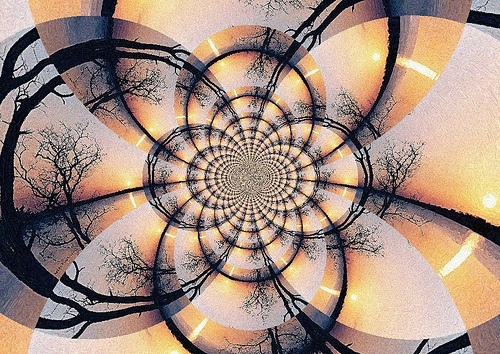
This lovely image courtesy of CC MacKenzie via Flickr
It’s been almost six months since the WHO declared COVID-19 a global pandemic. Since then, the world’s turned upside down… and as much as we’d all like to think that things will “go back to normal,” I think the best we can hope for is a new sense of safety and stability. Particularly since, every time we check the news, a brand new, civilization-upending crisis seems to have struck.
In ecology, periods of great change, like this one, are called “disturbances.” Scientists used to think that ecosystems developed along linear pathways, starting simple and progressing, inevitably, to some stable state that persisted for centuries. Honestly, it was a lot like the old idea that evolution progressed from simple, single-celled organisms to complex ones, reaching its inevitable pinnacle in humanity. Now we know that’s not how either of those things work. Ecosystems are in constant flux – the boreal forest, for example, is frequently “disturbed” by devastating fires, windstorms, and insect outbreaks that seem to reset the process of succession.
And a microscopic virus that can’t even reproduce by itself has shown us just where we rank on the evolutionary food chain.
It’s humbling, it’s terrifying, and it’s also… kind of hopeful?
Sure, we’ve seen a whole lot of stupid, irresponsible behaviour in everyone from our neighbours to our politicians. But as in any crisis, we’ve also seen generosity, and kindness, and patience, as people work together to protect and support each other under exceptional circumstances.
And I, for one, have been thinking about that old “normal,” and the parts of it I want back, and the parts of it I really, really don’t.
I think that, sometimes, we have to be forced to do things differently to believe that it’s possible to do them differently. Without a crisis, would we ever take the time to examine our choices, our lives, our civilization… our futures?
Disturbance is uncomfortable, it’s devastating, it’s deadly. I’ve been fortunate in that this one has – so far – touched me relatively lightly. I know that millions of people, in my community and around the globe, have not been so lucky. And I hope that we all remember the lessons that COVID is teaching us, once the crisis has passed.
In the meantime, we carry on. For me, that means working when I can, and being gentle with myself when I’m too exhausted or distracted to try. It means getting outside in fresh air and nature as much as I can. It means indulging in hot baths and exercise and reading and Netflix and other forms of self-care a little bit every day. It definitely means checking in with the people I love, if only to let them know that I’m thinking about them while we have to be apart. It means being patient with stressed essential workers, and following safety guidelines, and wearing my mask, and washing my hands. And breathing.
How ironic that taking a deep breath is the thing I most often forget! And yet, I’m so grateful that I’m still able to do so.
What about you, my friends? How are doing? How are you coping? What is working for you right now, and what isn’t? What do you hope your life will be like, when we all come out the other side? Check in – I’m here and I’d love to hear your stories.
August 17, 2020
Writing Assignments: Four Tips for Approaching Topics You Didn’t Choose
Welcome to Teach Write! This column draws on my 20 years’ experience teaching writing to kids, university students, and adult learners. It includes ideas and exercises that teachers and students can use in the classroom, and creative writers can use to level up their process.
School is starting soon (however strange and remote it may be), which means… writing assignments! Today on Teach Write, we are talking about coming up with ideas for writing on assigned topics.
True story: most of my children’s books are on topics I didn’t choose. A couple of them are on topics that I NEVER would have chosen, had I been left to my own devices. That’s because I started my career in educational publishing. Educational publishing produces kids’ books exclusively for the school and library market, so publishers design a series to meet curriculum standards and then hire writers to do the work. As one of those writers, I’d get an email that said, “Want to write a book about hybrid cars?” and I’d either have to say “No thanks, I don’t want to publish a book this year” or “Sure!” and figure out the difference between a carburetor and a catalytic converter later.
Similarly, a number of children’s magazines are designed around themes, meaning writers have to choose from 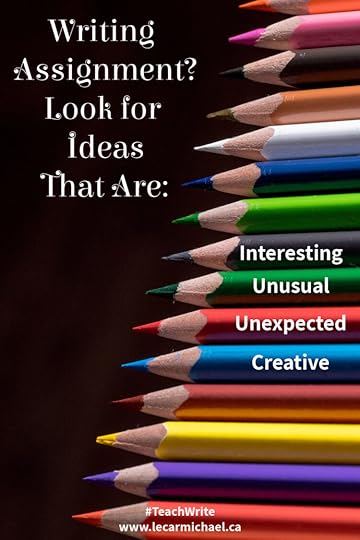 a list of predetermined topics and develop ideas that fit that theme. All of which is to say that a huge portion of the children’s publishing market works on the same model as the school writing assignment: here’s a topic, show me what you’ve got.
a list of predetermined topics and develop ideas that fit that theme. All of which is to say that a huge portion of the children’s publishing market works on the same model as the school writing assignment: here’s a topic, show me what you’ve got.
First, some good news. Even if you’re not particularly interested in writing that essay about Pride and Prejudice, it’s WAY easier to come up with an idea when you’ve got a place to start than when someone says “write an essay on whatever you want.” The hardest exam question I’ve ever had to answer was “Tell me something you learned in this class that wasn’t already on this exam.” My brain, which had been merrily spitting up information in response to questions, went instantly blank.
Here’s My Best Advice for Approaching Writing Assignments:
If Given a Choice, Pick the Most Interesting Topic
In some cases, teachers will give you one question or topic you have to write about. Often, they will provide a couple of choices. This is mostly to give themselves, as readers, a little bit more variety… so that they don’t die of boredom when doing the marking.
If you’re given several options, pick the one that’s most INTERESTING to you, NOT the one that you think is going to be easiest. True story: it’s a lot easier to write about something that you’re interested in than something you couldn’t care less about. You don’t want to die of boredom while writing, either.
There is a reason I’ll never write another book about Programs and Apps. I gave it my best shot, but wow. This is just not a topic that I am into. 
August 9, 2020
Guest Post: Drones Over Your Head – Part 1
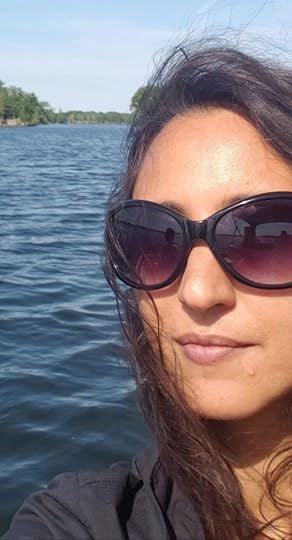
Learn more about author Nidhi Kamra by visiting her website!
Welcome to STEMinism Sunday! As a former woman in science, I have a deep and enduring interest in the experiences and representation of women in STEM fields (science, technology, engineering, and math). This series will be an opportunity for me – and you – to learn more about these intellectual badasses. Today, we have the first of two guest posts from Nidhi Kamra.
“Quarantine.”
That’s probably one of the most echoed words in the world during the Covid-19 crisis. And whether you are 9 or 99, it’s a word you won’t forget.
I bet you missed that hot gooey chocolate fudge on cold vanilla ice cream sticking to your teeth, your straw buzzing while savouring that last drop of a refreshing mango smoothie, or slurping those flavourful noodles from your favourite restaurant.
Didn’t you wish those delicious foods would magically drop down from the heavens?
Your wish will soon be a reality faster than you think.
It’s a Bird. It’s a Plane. It’s a UA What?
A UAV (Unmanned Aerial Vehicle), or RPAS (Remotely Piloted Aircraft System), or the pop-culture word, “drone,” is an aircraft that does not have a pilot, can be controlled remotely (remote control, phone app, a more complex ground station room etc.), can carry a payload (think pizza, camera …), and flies using the principles of aerodynamics.
In this post, we’ll talk about drones in different industries, types of drones, launch and recovery, policies, and how you can be a responsible citizen if you own a drone. There are lots of videos mentioned to keep you entertained as well.
I promise it won’t go over your head. No pun intended.
Pies in the Sky, Pigs That Fly, and Hollywood
Drones are making their way into many industries, including delivering your favorite foods. Here are some examples of industries that are being disrupted and propelled forward, thanks to drones.
Delivery:
Big and small companies are assessing drone delivery methods because they are quick (avoid traffic) and cheaper (low shipping costs). Deliveries can range from apple pies, pizza, pork chops, clothes, express parcels, medicines, organs, blood … Use your imagination.
Wing, a company owned by Google, is testing delivering a hot cup of coffee to residents in Canberra, Australia. The drone hovers over the residence, and lowers the goodies down via a string.
Another company, Zipline, is delivering blood. The drone saved a little girl’s life in Rwanda when it dropped off a parachute containing cold, refrigerated blood, ready to be pumped via IV in minutes. It can take hours or days for blood and medicines to be delivered to distant villages with dirt roads and no infrastructure. Drone companies are seeing an opportunity and providing quick “last-mile” much needed services.
Security, Emergency Services, Search and Rescue:
Let’s think Hollywood for a second. A bank’s been robbed and the fugitive is on the run.
Police cars. Hot pursuit. Sirens. Screeching. Wrong side of the highway. Car crashes. Explosions.
You get the picture. In the real world, this dangerous ordeal can be avoided if law enforcement deploys a drone to follow the fugitive. Drones equipped with day or night vision infrared cameras and GPS can fly at high speeds above ground (avoiding accidents and casualties), and provide real time data, like location, licence plate number etc. Similarly, drones are a perfect choice for border security, searching for wild fires, crime scenes, accidents, traffic congestions etc. Some of the bigger drones can even rescue people. Hey – and even if it’s Hollywood, shooting a movie scene using a drone equipped with a high quality camera is cheaper — you don’t need to rent a helicopter for aerial shots. It renders better shots as the drone keeps the camera stable and captures tricky angles. Drones can squeeze into tight spaces like tunnels, and are great for documentaries! Watch a drone follow a rally car here:
Surveying:
Drones are growing in popularity in surveying infrastructure, railroads, forests, pipelines, geological features like volcanoes, oceans etc. The drones carry cameras and / or sensors that can take regular colour pictures or more sophisticated images used to generate 3D models of the area and provide detailed information.
Pipeline monitoring for oil or saltwater leaks is a cumbersome, time-consuming task, considering pipelines can stretch for thousands of kilometers. Many times, the pipelines are in remote places and dangerous to access. Leaks from corrosion of pipelines are hazardous to the environment, properties, farms, oceans etc. and can take many years plus hundreds of thousands of dollars to fix. Drones allow for proactive and frequent monitoring of pipelines, preventing damages and high repair costs.
Scientists are deploying drones to study volcanoes as traversing the volcanic landscape is risky business for humans. Some ways a potential earthquake can be detected are by monitoring changes in composition of gases like carbon dioxide and sulphur dioxide in the volcanic plume, ground swelling and cracking, steaming in vents, changes to plant life etc. A drone can employ gas detection sensors and LiDAR (Light Detection and Ranging) sensors to perform some of the monitoring tasks accurately, potentially saving millions of lives. Watch a small documentary on measuring volcanic emissions with drones here:
Check Back September 7, 2020, For the Second Post in this Series!
Nidhi Kamra is a picture book author. She currently has two titles under her name: Ten Sheep to Sleep, and recently released, Simon’s Skin. Her books can be purchased on Amazon and other online book stores.
You can also learn more about Nidhi Kamra on her website, or follow her on Facebook and Twitter.
August 3, 2020
Cantastic Authorpalooza: Heather Camlot
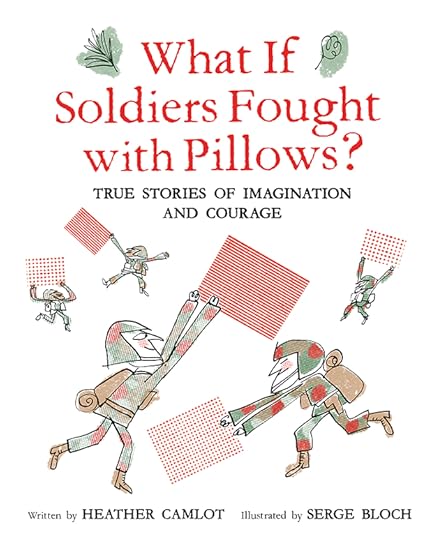 Welcome to Cantastic Authorpalooza, featuring posts by and about great Canadian children’s writers! Today’s guest:
Heather Camlot
. Take it away, Heather!
Welcome to Cantastic Authorpalooza, featuring posts by and about great Canadian children’s writers! Today’s guest:
Heather Camlot
. Take it away, Heather!
“Where do your ideas come from?”
That’s the question I get asked most from children and adults alike. The simplest answer is, from my life. Don’t misunderstand, I don’t have a wild and crazy life full of intrigue and adventure. Quite the opposite in fact. But there are things that have happened, questions gone unanswered, that I needed to explore.
This is the way the idea for What If Soldiers Fought with Pillows? came, but I have to give credit to my son for this one. When he was around 10, he was having nightmares about war. I lay on his bed with him and he described what he was seeing – bombs, tanks, soldiers…
How does a parent turn horrible dreams into good ones? It took some time, but eventually, I said, “What if the soldiers were fighting with water guns or pillows?” He rolled his head towards mine, checked to see if I was serious. Then, slowly, a smile crept onto his face. And then we both laughed. “But what about the bombs?” he asked, after visualizing pillow fights and sopping wet soldiers. Another moment passed, until I came up with a silly solution to that as well. “What if the planes were dropping flowers and food?” He gave me another smile and eventually fell asleep.
I returned to my room, but lay awake for hours, thinking about how turning scary images into funny ones could be a story and trying to come up with other “what ifs” to fill a picture book. A picture book is what I first created – just whimsical line after line. Owlkids Books publisher Karen Boersma liked the idea and brought it to her team. Editorial director Karen Li said, “What if Heather could find examples of people and organizations subverting violence, war, and totalitarian power, and introduce each example with what seems like a whimsical sentence—but turns out to be something achievable? What if this were a book that challenged kids to dream, but also showed them ways that the impossible was possible?”
Um, wow. This was just supposed to be a quirky little book. But Karen Li provided an example – the organization Food Not Bombs. And then I mentioned soccer legend Didier Drogba, who helped stop a civil war in his home country of Ivory Coast. I should probably tell you that the Drogba idea also came from my son – he had been working on a biography for a school project! The rest of the profile ideas came from months of research. The more I dove into the subject, the more examples I found and the more fascinated I became.
I am so proud of What If Soldiers Fought with Pillows? and in awe of the amazing people and organizations I was fortunate enough to shine a spotlight on. I don’t know where their ideas came from to make the world a better place, but I’m certainly glad they acted on them.
Ideas are funny things – just fleeting thoughts, imagined pictures. Whether they arise from a child’s nightmare, real-world circumstances or questions about one’s own history, we need to grab them before they disappear. You never know where those ideas might lead.
Heather Camlot is the author of What If Soldiers Fought with Pillows (Owlkids Books, 2020), The Other Side (Red Deer Press, 2020) and Clutch (Red Deer Press, 2017). She is also a journalist, editor and translator. Born and raised in Montreal, she lives in Toronto with her family. Find her online on Facebook, Twitter, Instagram and HeatherCamlot.com.
July 27, 2020
Drawdown: Yes, It IS Possible to Reverse Global Warming
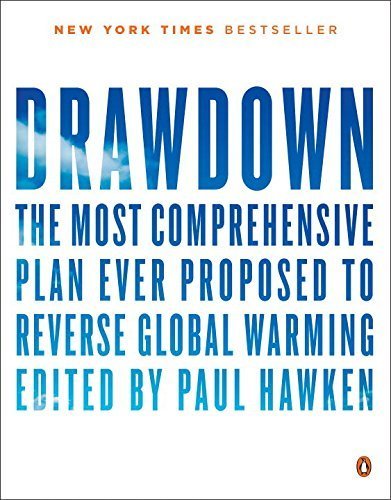 Welcome to Mad Science Mondays, where we talk about depictions of science in movies, TV shows, books, and the media. We dissect the good, the bad, the comical and the outright irresponsible. Who says learning about science can’t be fun?
Welcome to Mad Science Mondays, where we talk about depictions of science in movies, TV shows, books, and the media. We dissect the good, the bad, the comical and the outright irresponsible. Who says learning about science can’t be fun?
If you’re anything like me, media coverage of climate change has given you the following impressions:
Dependence on fossil fuels is the main reason for climate change.
Individuals bear ultimate responsibility for climate change, because we make choices that are bad for the environment.
Doing things differently would be so expensive that change is basically impossible.
If you’re anything like me, this messaging has also created a creeping sense of despair, helplessness, and fatalism about the inevitability of climate change and the impacts it will have on the Earth, its living things, and the future of human civilization.
But here’s what I learned from reading Drawdown: these impressions, while somewhat true, are definitely not the entire truth. Yes, the problem is real, and serious, and potentially devastating. But it’s NOT too late. It’s not only possible to reduce the release of greenhouse gases into the atmosphere, it’s possible to take out the ones that are already in there.
That’s called drawdown, and we already have the skills and technologies to do it. It’s not a matter of knowledge, it’s a matter of scale.
I know. I was astonished, too.
Because of my work, I spend a lot more time studying climate change research than most people do, but there were a LOT of things in this book that I’d never heard of before. Reading it made me feel both:
outraged at the media for its biased and narrow coverage of the issues, and
a lot more hopeful about climate change than I’ve felt in a long, long, time.
Here are the three most important things I learned from reading Drawdown:
Fossil Fuels Aren’t The Whole Story
Yes, absolutely, fossil fuels are a huge issue, and we need to stop using them. But did you know that chemicals used in REFRIGERATION and AIR CONDITIONING are actually the number one contributor to global warming?
ME EITHER. I haven’t heard a peep about the environmental impact of refrigeration since the early 90s, when scientists figured out that CFCs were tearing holes in the ozone layer and the global community instantly banned them.
And we’ve all heard that plant-based diets are better for the environment, but it turns out that food waste is actually a bigger contributor to climate change. Not to mention a host of other agricultural and land use practices that can be shifted to benefit, not just the atmosphere, but human health.
Culture, Corporations, and Government Policy are More Important than Individual People
We’re often told that climate change won’t improve until we walk more, swap our lightbulbs to LEDs, and have Meatless Mondays. Those things are important, and we should totally do them if we can. But most of the drivers of climate change occur at levels above our individual choices – factors operating at the scale of culture, business, and politics. Those are things that we can also change, but only working together – protesting, campaigning, and voting (with both our ballots and our wallets).
This is bigger than any one of us, but that doesn’t mean we can’t make a difference, if we’re willing to think beyond our own households.
Change Is Too Expensive
Cost is also about scale – the timescale over which it’s measured. Yes, change costs more… in the short term. But between today and 2050? The changes proposed in Drawdown actually cost billions of dollars less than continuing to do things the way we are doing them now. Which means that going green isn’t just good for the environment and human health, it’s good for the economy.
That’s right. The economy.
Who knew?? Oh right, scientists did. But we don’t tend to hear from them, because business-as-usual industries have more money to spend on advertising.*
TL/DR – Read This Book
Drawdown is not the kind of book you can sit down and read straight through. Rather, I suggest digesting it a spread or two at a time, stepping back to learn more about solutions that interest or resonate with you. This is the kind of book meant to provide a sense of hope and empowerment – it doesn’t flinch from the severity of our situation, but underlines our collective ability to save ourselves and the only planet we’ve got. It’s required reading, and I hope it inspires you the same way it has inspired me.
To learn more and for the latest research, visit the website for Project Drawdown.
*That part is not in the book, but come on. It’s not like it’s a stretch.
July 20, 2020
Giants in the Canyons: Where Nonfiction Writers Get Their Ideas
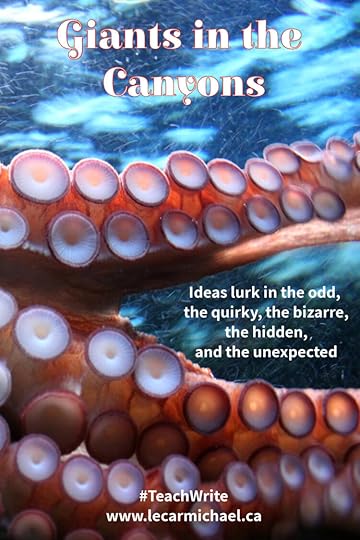 Welcome to Teach Write! This column draws on my 20 years’ experience teaching writing to kids, university students, and adult learners. It includes ideas and exercises that teachers and students can use in the classroom, and creative writers can use to level up their process.
Welcome to Teach Write! This column draws on my 20 years’ experience teaching writing to kids, university students, and adult learners. It includes ideas and exercises that teachers and students can use in the classroom, and creative writers can use to level up their process.
Last time I shared the inspirations for some of my short stories and novel manuscripts, as a first attempt to answer the question, “Where do writers get their ideas?” Most of my work, however, is nonfiction. And the good news? Getting ideas for true stories is WAY easier than getting ideas for fiction. All we have to do is learn how to pay attention.
By definition, nonfiction deals with information… and most of us are bombarded with new information each and every day. It comes from:
things we see, hear, touch, smell, and taste
books
print and digital magazine articles
the news
social media
conversations with friends
conversations with strangers
conversations we’re not actually part of but can’t help but overhear…
The human brain is really good at filtering out extraneous information. It’s a survival instinct meant to focus our attention on things essential to life (ripe cherries!) and things that might kill us (bears!). Grappling with these big picture concerns, and with more sophisticated ones (patriarchy, systemic racism, novel diseases…) generates all kinds of ideas for meaningful writing.
But for nonfiction writers, ideas also lurk in the odd, the quirky, the bizarre, the hidden, and the unexpected. To unearth those ideas, we have to train ourselves to pay attention to things our brains might not consider essential to our survival: things that are, simply put, merely interesting.
The most exciting phrase to hear in science, the one that heralds new discoveries, is not “Eureka” but “That’s funny…”
—Isaac Asimov (1920–1992)
As I’m going through my day, swimming in a sea of information, I wait for the radar ping in the back of my brain – the ping that says, “That’s funny… ” or “How odd…” or especially, “I wonder why…” The reasons underlying those strange and strangely interesting nuggets of fact, in my experience, are where the best ideas lurk – like giant squids in underwater canyons.
Once I taught myself to pay attention, I realized I’d never run out of ideas again. Figuring out whether those ideas are good – meaning interesting to my audience as well as to myself – is a different challenge, but since I write for kids, it’s an essential one. To use an example from my scientific background: no child cares about the polymerase chain reaction and how it revolutionized molecular biology. But the way scientists use it to solve crimes against animals? That idea is a winner (literally).
Hone Your Idea Radar:
The pandemic continues, so many of us will be sticking close to home this summer. Here’s an exercise in paying attention that works for both professional writers and house-bound kids: keep a field notebook. Are there plants or animals in your house, your backyard, that park where you like to walk? Observe them, and record your observations in as much detail as you can. What do you see, smell, hear, touch, taste?* What is interesting or confusing about a person, plant, or animal’s behaviour? What might explain it? Hop online or request a curb-side pickup from your library or local bookstore. Learn more, and tell the world what you learn.
*If your subjects are alive, better to avoid touching and tasting. Especially if they might be contagious!
Hey, did you know I teach writing workshops? It’s true – I work with adult writers, teachers, and students of all ages. Contact me to learn more.
July 12, 2020
STEMinism Sunday: Biologist, Novelist, and Children’s Nonfiction Writer Ann Eriksson
On July 23rd, I’m doing a virtual Q&A with the Federation of BC Writers, as part of their Author Connections series. Now is your chance to pick my brain on all aspects of research, writing, and publishing books for kids! This is a public event – non-members are welcome to attend. See the Public Appearances page for all the details.
And now, onto STEMinism Sunday!
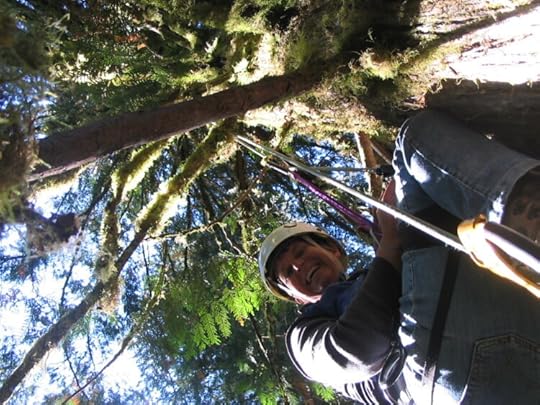
Welcome to STEMinism Sunday! As a former woman in science, I have a deep and enduring interest in the experiences and representation of women in STEM fields (science, technology, engineering, and math). This series will be an opportunity for me – and you – to learn more about these intellectual badasses. Today, a guest post by scientist and author, Ann Eriksson!
In 1987 I was at a crossroads in my life. A personal tragedy had me questioning my future and I decided to change directions and go back to school. But what to study? My two life interests were nature and creative writing. I made a difficult decision to set the writing aside and study biology. Little did I know that my two passions would eventually converge.
I headed off to the University of Victoria where I earned a Bachelor of Science degree with a minor in Environmental Studies. After graduation, I started doing contract work with various government and non-profit agencies, which allowed me to be at home with my two children. Then in 2000, a story started living in my dreams. I would wake up every morning with sentences, scenes and characters running through my head. I pushed them away. I didn’t have time to write, I argued with myself. I was a single parent with a job, an old house and garden to look after, a dog to walk. But the story continued to pester me. Out of the blue, a friend called me to ask if I would like to join a newly formed writing group. Yes, please! Help me get these characters out of my head.
I wrote my first novel in six months through that supportive group of women. Magically, Decomposing Maggie was published by an independent Canadian press the following year. My book and my writing career were launched. As I continued to write fiction, it became obvious that my passions were converging. My biology informed my writing and my writing gave my love and knowledge of nature a voice. To date I have published five novels, four of which have ecological themes. Two of my novels have scientists as protagonists.
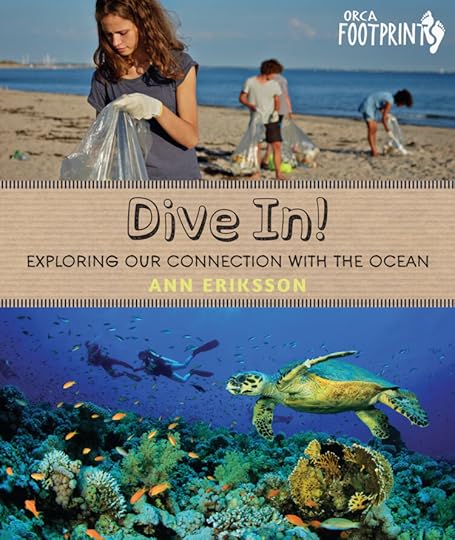 One of my greatest pleasures and a real point of convergence was the pre-writing research. For my third novel, Falling from Grace, I really went out on a limb. The protagonist, Faye, is an entomologist who studies mites in the high canopy of the ancient temperate rainforests of the Pacific Northwest. To write about Faye authentically, I had to understand her work. I wasn’t sure how to go about it. A casual conversation with a biologist friend solved that. She, conveniently, had a friend who was a canopy scientist. What luck! She introduced me to Nalini Nadkarni, who at the time worked at The Evergreen State College in Olympia, Washington, and who turned out to be one of the pioneers of the emerging field of canopy science. Nalini kindly invited me to join her crew on two of their field expeditions into some of the few original Coastal Douglas-fir forests left in Washington State. Under the guidance of crew leader PhD student Anne McIntosh, I literally went up into the canopy. Anne taught me how to climb using the suspended rope systems that have allowed scientists like Nalini to explore an ecosystem which until recently was completely unknown. The canopy of these ancient forests has yielded hundreds if not thousands of new species and an understanding of the essential ecological role played by this new frontier. Dangling forty feet in mid-air beside a Doug-fir giant was both terrifying and exhilarating. I was hooked. I later climbed with Zoë Lindo, a PhD student from the University of Victoria, who took me up in the canopy of the Western hemlock forests on the west coast of Vancouver Island where she collects mites from metre-thick moss mats. Later, in her lab, she showed me how to mount a mite on a slide, a new species that she both discovered and named. Because of the generosity of these amazing scientists—my ‘canopy Goddesses,’ —my manuscript reached greater depths, or should I say new heights!
One of my greatest pleasures and a real point of convergence was the pre-writing research. For my third novel, Falling from Grace, I really went out on a limb. The protagonist, Faye, is an entomologist who studies mites in the high canopy of the ancient temperate rainforests of the Pacific Northwest. To write about Faye authentically, I had to understand her work. I wasn’t sure how to go about it. A casual conversation with a biologist friend solved that. She, conveniently, had a friend who was a canopy scientist. What luck! She introduced me to Nalini Nadkarni, who at the time worked at The Evergreen State College in Olympia, Washington, and who turned out to be one of the pioneers of the emerging field of canopy science. Nalini kindly invited me to join her crew on two of their field expeditions into some of the few original Coastal Douglas-fir forests left in Washington State. Under the guidance of crew leader PhD student Anne McIntosh, I literally went up into the canopy. Anne taught me how to climb using the suspended rope systems that have allowed scientists like Nalini to explore an ecosystem which until recently was completely unknown. The canopy of these ancient forests has yielded hundreds if not thousands of new species and an understanding of the essential ecological role played by this new frontier. Dangling forty feet in mid-air beside a Doug-fir giant was both terrifying and exhilarating. I was hooked. I later climbed with Zoë Lindo, a PhD student from the University of Victoria, who took me up in the canopy of the Western hemlock forests on the west coast of Vancouver Island where she collects mites from metre-thick moss mats. Later, in her lab, she showed me how to mount a mite on a slide, a new species that she both discovered and named. Because of the generosity of these amazing scientists—my ‘canopy Goddesses,’ —my manuscript reached greater depths, or should I say new heights!
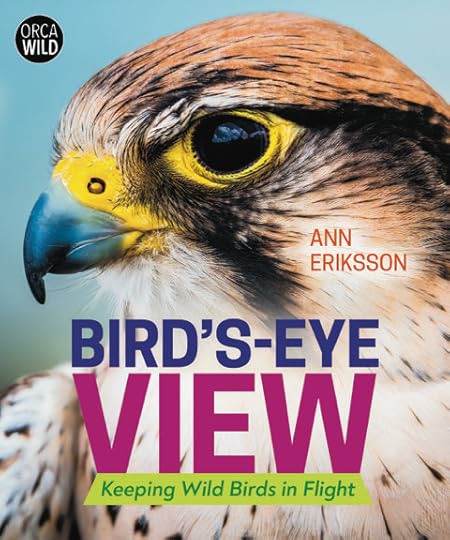 For the past few years, my work has taken an unexpected detour from fiction, which has brought my writing and my biology together in a new way. I’ve written two non-fiction ecological literacy books for middle readers with a third for youth in progress, all published by Orca Book Publishers in Victoria, BC. Dive In! Exploring Our Connection with the Ocean was released in 2018 as part of Orca’s Footprints series. My most recent, published in May as part of the Orca Wild series, is Bird’s-Eye View: Keeping Wild Birds in Flight. In progress is a book for teens about the climate crisis to be launched in the fall of 2021 with the Orca Issues series. All three are focused on conservation and inspiring young people (and their adults) to make a difference in this wonderful but imperilled world.
For the past few years, my work has taken an unexpected detour from fiction, which has brought my writing and my biology together in a new way. I’ve written two non-fiction ecological literacy books for middle readers with a third for youth in progress, all published by Orca Book Publishers in Victoria, BC. Dive In! Exploring Our Connection with the Ocean was released in 2018 as part of Orca’s Footprints series. My most recent, published in May as part of the Orca Wild series, is Bird’s-Eye View: Keeping Wild Birds in Flight. In progress is a book for teens about the climate crisis to be launched in the fall of 2021 with the Orca Issues series. All three are focused on conservation and inspiring young people (and their adults) to make a difference in this wonderful but imperilled world.
If you want to know more about my biology and creative work, you can find me at www.anneriksson.ca or on Facebook at Ann Eriksson Books.
July 6, 2020
Cantastic Authorpalooza: Danielle Younge-Ullman
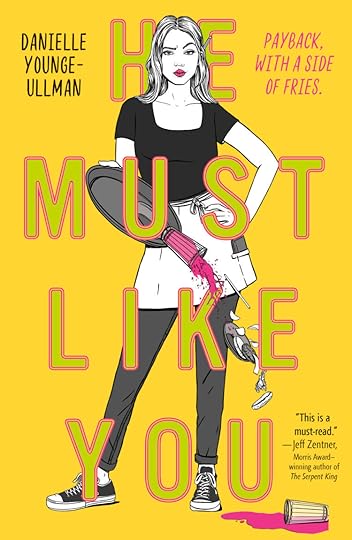 Welcome to Cantastic Authorpalooza, featuring posts by and about great Canadian children’s writers! Today’s guest:
Danielle Younge-Ullman
. Take it away, Danielle!
Welcome to Cantastic Authorpalooza, featuring posts by and about great Canadian children’s writers! Today’s guest:
Danielle Younge-Ullman
. Take it away, Danielle!
The idea for my teen novel, HE MUST LIKE YOU, which comes out on July 14, arrived in a kind of backwards manner. Let me explain: about a year before the #metoo movement took off, there was a high profile harassment story in the Canadian news. It involved harassment in the workplace, and harassment outside the workplace, by a media personality. Some of the alleged incidents were dramatic and horrible, while others were of the more everyday variety—though still very much not okay.
All of this got me thinking about my past, and caused me realize that years ago I had experienced workplace harassment. In fact, while working as a server at a restaurant, I had experienced many different types of harassment, often on the same day, and even at the same time. Most of this harassment, though, was considered normal at the time, but even things that everyone knew weren’t okay—verbal abuse of servers by customers, for example—were thought to be unavoidable, because the customers were in a position of power, and had to be kept happy.
Luckily nothing really terrible ever happened to me, but many small, unpleasant things did, and that can be difficult. It can be hard to know what to do in a situation like that, because each thing can seem like not a big deal, or not a big enough deal to confront or report. And if you do confront or report, there is a risk that people will not think the problem is serious.
Being forced to accept a bunch of “small” bad behaviours—rude comments, disrespect of your boundaries, and unwelcome physical contact on a regular basis is terrible in a way that’s hard to describe. (Some of these behaviours, you probably know, can be called “microaggressions.”) The affects are not small, but they sneak up on you quietly, and make you feel stressed, tired, frustrated, angry, resentful, or even physically ill, and/or seriously depressed, sometimes without you knowing why you’re feeling that way.
Looking back at my years as a server caused me to realize what a huge problem harassment is in the restaurant industry. And thinking about this soon set my brain to thinking further back, to situations in my teen years when it was sadly a pretty common occurrence for people to push past one another’s boundaries in ways that were confusing, upsetting, and hard to deal with or even talk about. I was realizing how many areas of life can be filled with ongoing situations that don’t seem quite bad enough to confront, but which cause serious damage over time.
I decided, then, that I wanted to write a book about a teenage girl dealing with a whole host of these kinds of problems, all at once. I wanted to really dig into the effects, and demonstrate how these things build up and affect people. And then I wanted to give this girl the chance to take the power into her own hands, and put a stop to the things that have been happening to her.
So…not only did the idea for the book come to me backwards in terms of remembering my own experiences, I also wrote the first draft that way, starting with one of the most dramatic events first, and going back in time with each chapter. I eventually ended up revising the timeline to a more classically chronological one because it worked better for the story, but it was an interesting way to write the first draft, and helped me figure out what the story was about. I encourage you to explore unusual ways to tell stories your stories too—you never know what might happen!
To learn more about Danielle and her books, visit her website, or find her on Twitter.
June 29, 2020
Representation of (Mad) Women Scientists in Rampage
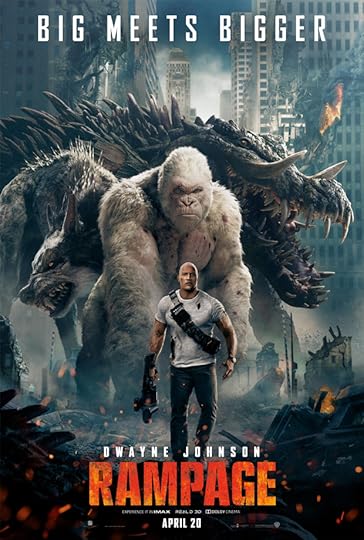 Welcome to Mad Science Mondays, where we talk about depictions of science in movies, TV shows, books, and the media. We dissect the good, the bad, the comical and the outright irresponsible. Who says learning about science can’t be fun?
Welcome to Mad Science Mondays, where we talk about depictions of science in movies, TV shows, books, and the media. We dissect the good, the bad, the comical and the outright irresponsible. Who says learning about science can’t be fun?
One of the reasons I started Mad Scientist Mondays was because a lot of people don’t actually know any scientists. As a result, cultural depictions of science and scientists – like those in movies and on TV – have an outsized influence on our beliefs about and perceptions of the real thing. And I honestly believe that a major reason that a lot of people distrust science and scientists is because, in movies, scientists are either:
arrogant to the point of stupidity,
eccentric to the point that we can’t relate to them, or
power hungry sociopaths.
Case in point: Rampage.
We’re not going to talk about the science of this movie, in which genetically engineered animals go on a – you guessed it! – rampage through Chicago. “Movies based on 1980s video games” is not a subgenre overly concerned with accuracy, or even necessarily plausibility. Mostly, these movies are concerned with fun, and there’s nothing wrong with that. I know I could use a little more fun in my life, especially right now, and I’m betting you can, too. But for me at least, the fun was soured by my disappointment at the depictions of the scientists.
Credit where due, all of the scientists in the film are women. “But wait,” you say, “what about Dwayne Johnson’s character, the hero of the movie?” Mmmmyeah, not a scientist. Everyone calls him a primatologist, but they also call him “Mister,” not “Doctor,” which mean’s he’s not formally trained. In fact, he’s a former soldier whose main qualification for working with gorillas is that he likes animals more than people. That’s a sentiment I’ve experienced myself on occasion, but it’s not what makes someone a scientist. An action hero, yes, but not a scientist. 
June 22, 2020
The Idea Store: Sources of Inspiration for Children’s Writers
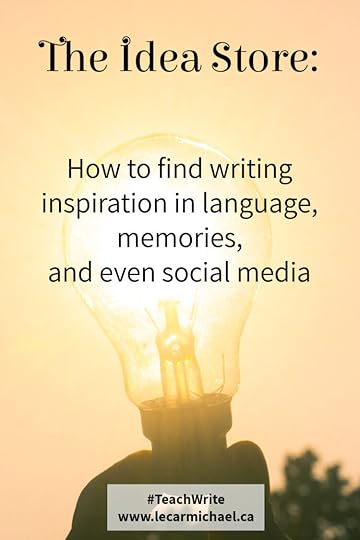 Welcome to Teach Write! This column draws on my 20 years’ experience teaching writing to kids, university students, and adult learners. It includes ideas and exercises that teachers and students can use in the classroom, and creative writers can use to level up their process.
Welcome to Teach Write! This column draws on my 20 years’ experience teaching writing to kids, university students, and adult learners. It includes ideas and exercises that teachers and students can use in the classroom, and creative writers can use to level up their process.
When asked where we get our ideas, writers often joke “The idea store.” In an age where we can type “writing prompts” into Google and return literally thousands of starting points for our next masterpieces, it’s actually not that far off. Ideas are everywhere: in one of his Discworld books, Terry Pratchett describes them as whizzing through the air, searching for a receptive brain to bump into. Often ideas arrive piecemeal, building over time, until a lot of things we’ve been thinking about suddenly coalescence into a unified whole.
None of which is actually helpful to the person who asked the question! So today, I thought I’d share the origin stories of several of my manuscripts, in hopes they give fiction writers a practical place to begin. Several of these stories can be read for free on this website!
Grandma’s Teacups
Memories are a great source of ideas, particularly for children’s writers who need to recall what it’s actually like to be a kid. Grandma’s Teacups is based on one of my earliest memories. We’d gone to visit my great-grandmother, who lived in a gloomy house with old-fashioned metal heating grates – the fancy filigreed kind with large open holes. Great Grandma gave me permission to play with her doll’s teacups, provided that I was very careful not to drop one down the grate. You can guess what happened, and how terrified I was to confess… The plot of Grandma’s Teacups doesn’t bear much resemblance to my memory, but Kaylee’s emotions definitely do!
Tornado Alley
What stories does your family tell over and over again? Those tales persist for a reason, and they are a great starting place for original fiction. After all, why make stuff up if we don’t have to?
The time my Mom saved two kids from a tornado, earning enough the money to buy a coveted Barbie doll, is the stuff of legend in my clan. I coveted that very-same Barbie doll as a child, and it came to me after my Mom passed. I wrote Tornado Alley to honour that connection to my Mom, as well as to record a formative moment in her life.
Mining Social Media
Yup, I am fully aware that social media can be a cesspit of negativity and despair, but it’s also an endlessly-refreshing stockpile of articles, quotes, perspectives, and images that can be mined for ideas. Helaine Becker and I co-wrote an entire middle grade fantasy novel based on a single photograph – we’re working on a sequel while the first manuscript makes the rounds of potential publishing houses. This is the second time (that I know of) that Helaine has turned a social media post into a manuscript. Ironically, both ideas came from photos that I had shared! Which just goes to show that even professional writers don’t always recognize a good idea when it stares them in the face.
French Braid
If you’re really struggling, try making a “story kit.” On a piece of paper, write a list of 20 random nouns, and a list of 20 random verbs. Cut the words out and put them into a box or baggie. Shake it up and pull one out. What memories, associations, or ideas does that word spark for you? Write down as many ideas as you can. If you’re drawing a blank, pull out a second word (or two), make a new list of ideas, and look for connections between the two.
This method can produce some surprising results, like my short story French Braid, which started from a single word: brush. “Brush” reminded me of how much I loved having my hair brushed and styled as a child, and of a friend who was an absolute genius with French and Dutch braids (she could make pony tails and zig zags and crowns…). French Braid is entirely fictional, but this same prompt could easily have led me in a more biographical direction – towards the time that my Mom was working the day of school pictures and my Dad (bless him!) wielded the crimping iron with great success.
Don’t judge me – it was the 80s.
Your turn!
Where do you get YOUR ideas from? Share your favourite story-generating techniques in the comments!
Hey, did you know I teach writing workshops? It’s true – I work with adult writers, teachers, and students of all ages. Contact me to learn more.



